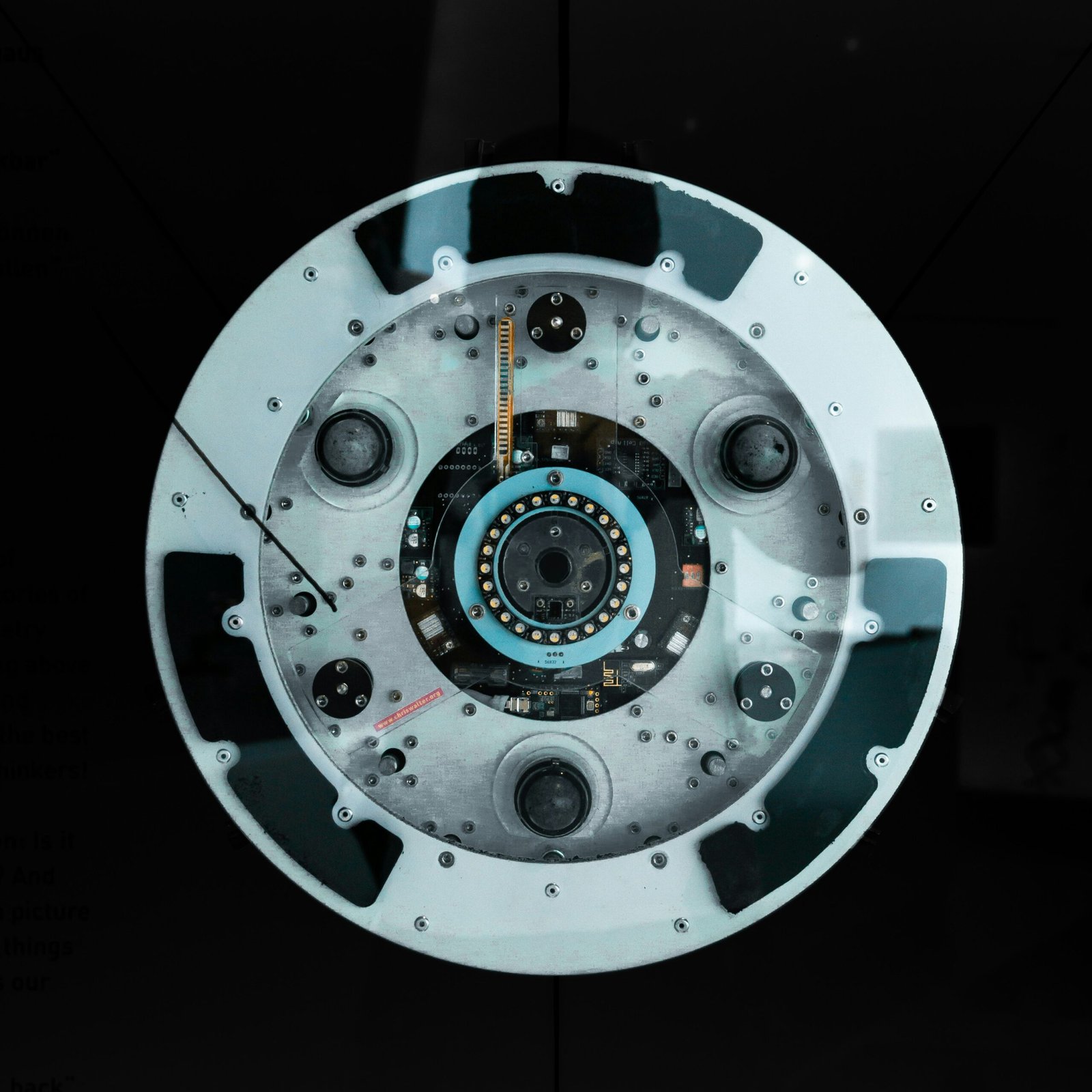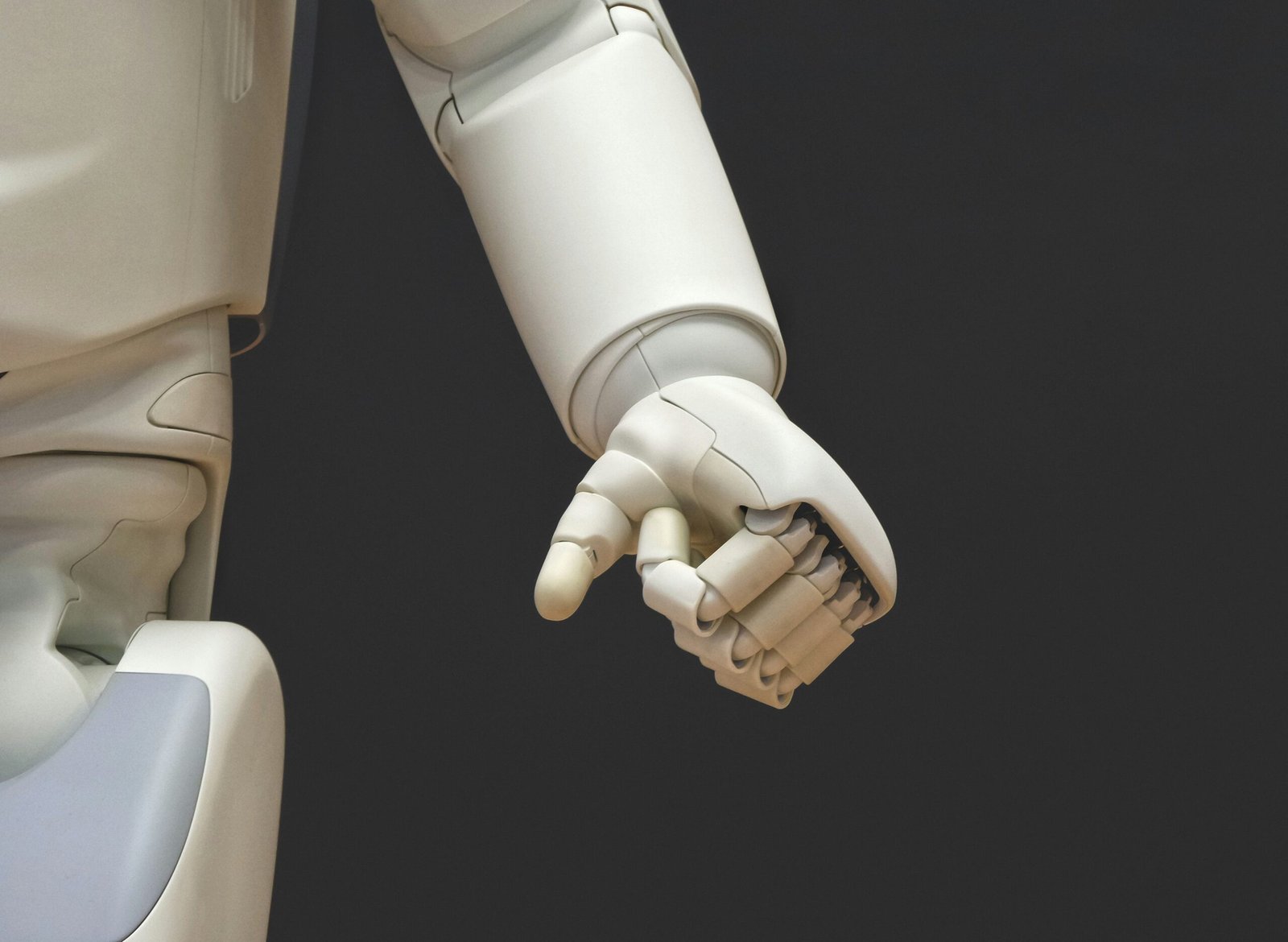Nanobots in Medicine: How Tiny Tech Is Revolutionizing Health Treatments

Introduction to Nanobots
Nanobots, tiny machines measured in nanometers, are at the forefront of a technological revolution in the medical field. Derived from advancements in nanotechnology, these microscopic entities are designed to perform specific tasks at the cellular or molecular scale, offering unprecedented precision and efficiency in medical treatments.
Nanotechnology, the science of manipulating matter at the nanoscale, dates back to the ideas of physicist Richard Feynman in the late 1950s. He envisioned the possibility of manipulating individual atoms and molecules, laying the conceptual groundwork for nanotechnology. By the 1980s and 1990s, breakthroughs in microscopy and materials science began making such manipulation feasible, paving the way for the development of nanobots.
The technology behind nanobots involves sophisticated engineering that merges biology, chemistry, and physics. These tiny machines can be constructed using a variety of materials, including metals, polymers, and even DNA. One of their most remarkable characteristics is their size, often ranging from 1 to 100 nanometers. Despite such minute dimensions, nanobots are capable of performing complex functions such as drug delivery, diagnostic imaging, and even surgical procedures at a cellular level.
Early uses of nanobots were mainly theoretical, supported by limited laboratory experimentation. However, recent advancements have transitioned these concepts into practical applications. Initial studies demonstrated their potential in targeted drug delivery, where nanobots can carry and release medication directly at the site of a disease, minimizing side effects and improving therapeutic efficacy. In addition, nanobots have shown promise in non-invasive surgeries, capable of navigating the human bloodstream and performing minute tasks with high precision.
The rapid development and integration of nanotechnology in medicine are transforming the landscape of healthcare, heralding a new era where disease diagnosis, treatment, and even prevention are being redefined by these remarkable nanobots.
How Nanobots Work
Nanobots represent a remarkable frontier in medical technology, operating at the intersection of nanotechnology and robotics. These minuscule machines are typically designed to perform tasks at the cellular and molecular levels, embodying an intricate composition of various components. A nanobot generally consists of several critical elements that facilitate its function, including sensors, motors, and microprocessors. These integrated components enable nanobots to autonomously perform tasks or operate under external guidance.
The design of nanobots is meticulously tailored to ensure they can navigate the complex environments within the human body. They are often composed of biocompatible materials to prevent adverse reactions. The structure includes nanoscale motors, which provide propulsion, enabling the nanobot to move efficiently through biological fluids. These motors can be powered by various energy sources such as chemical reactions, magnetic fields, or even external light sources. The choice of energy source is pivotal, as it dictates the operational lifespan and capability of the nanobot.
Sensors within nanobots play a crucial role in their functionality. They can detect specific cells, monitor various physiological parameters, or identify the presence of particular substances such as glucose or cancer markers. These sensors feed critical data to the nanobot’s microprocessor, which processes the information and triggers appropriate actions. For instance, upon identifying a cancerous cell, the nanobot can deliver a targeted drug dose directly to the site, minimizing collateral damage to healthy tissues.
Programming and guiding nanobots through the body can be executed in several ways. Autonomous nanobots are pre-programmed with algorithms allowing them to make independent decisions based on sensor inputs. Alternatively, external control can be employed, where magnetic fields or ultrasonic waves externally steer the nanobots to desired locations. This hybrid approach of autonomy and control ensures high precision in medical interventions, promising advancements in areas like targeted drug delivery, non-invasive surgery, and real-time diagnostic monitoring.
Nanobots in Disease Diagnosis
In the realm of modern medicine, nanobots are emerging as groundbreaking tools for disease diagnosis. These microscopic machines operate on a nanoscale, allowing them to interact with biological cells, tissues, and molecules with unparalleled precision. One of the most remarkable applications of nanobots is their ability to detect biomarkers—specific molecules indicative of particular diseases—long before conventional diagnostic methods can. By offering early detection, nanobots profoundly influence treatment outcomes and patient prognoses.
Nanobots can be engineered to navigate through the human body and identify molecular signals that signify the presence of diseases such as cancer, infections, and genetic disorders. Equipped with sophisticated sensors, they can collect and analyze samples directly from biological environments, providing real-time data to healthcare professionals. This capacity for real-time monitoring enables the continuous tracking of disease progression and the immediate identification of any anomalies, drastically reducing the time lag compared to traditional diagnostic approaches.
The precision of nanobots in identifying diseases at their nascent stages is a significant advancement over current diagnostic techniques. Traditional methods, which often rely on imaging technologies or biopsy samples, can sometimes miss early signs of disease or provide inconclusive results. In contrast, nanobots are designed to interact at the molecular level, ensuring that even the smallest indications of disease are detected with high accuracy. This early detection capability is particularly crucial for diseases like cancer, where early intervention can mean the difference between successful treatment and a poor prognosis.
Moreover, the efficiency of nanobots in disease diagnosis not only enhances early detection but also minimizes the invasiveness of current procedures. Instead of performing extensive and often painful diagnostic tests, healthcare providers can deploy nanobots to perform targeted, minimally invasive diagnostics. This approach not only improves patient comfort but also reduces the risk of complications and the overall burden on healthcare systems.
Targeted Drug Delivery
Nanobots are at the forefront of a paradigm shift in the field of medicine, particularly in the realm of targeted drug delivery. These microscopic machines are engineered to navigate the complex environments within the human body and deliver medications with unparalleled precision. Unlike traditional methods, which often disperse drugs throughout the entire body, nanobots carry therapeutic agents directly to specific sites, such as tumor cells or inflamed tissues.
One of the significant advantages of targeted drug delivery using nanobots is the minimization of side effects. Traditional chemotherapy, for instance, affects both cancerous and healthy cells, leading to a range of adverse effects for patients. By contrast, nanobots can target and deliver chemotherapeutic agents solely to malignant cells, thereby sparing healthy tissues and significantly reducing systemic toxicity.
Moreover, the efficacy of drug treatments is substantially improved with this innovative technology. When medications are delivered precisely to the site of action, the required dosage can often be lower, yet more effective. This enhancement in efficiency not only increases therapeutic outcomes but also reduces the risk of drug resistance, a common issue in conditions like cancer and bacterial infections.
Current experimental treatments showcase the tremendous potential of nanobot-mediated drug delivery. For example, scientists have developed nanobots capable of directly targeting cancer cells and releasing chemotherapeutic drugs at the tumor site. Studies have demonstrated these nanobots’ ability to reduce tumor size in a manner more efficient than traditional chemotherapy. Similarly, researchers are investigating the use of nanobots to deliver anti-inflammatory drugs directly to sites of inflammation in diseases like rheumatoid arthritis, offering promise for more effective and less harmful treatments.
In summary, nanobots represent a groundbreaking advancement in targeted drug delivery. Their ability to deliver medications precisely where needed, while minimizing side effects and enhancing efficacy, heralds a new era of more personalized and effective treatment options. As research progresses, the medical community anticipates even broader applications, potentially transforming our approach to various diseases.
Nanobots in Surgery
The advent of nanotechnology has paved the way for significant advancements in the medical field, particularly in surgical procedures. Nanobots, miniature robots capable of operating at a molecular level, hold immense potential in transforming surgeries. These microscopic devices can perform micro-surgeries with unparalleled precision, drastically reducing the need for traditional invasive techniques.
One of the primary advantages of utilizing nanobots in surgery is their ability to minimize invasiveness. Conventional surgical methods often require large incisions, leading to extended recovery periods and increased risk of complications. In contrast, nanobots can navigate through the human body to targeted sites, performing essential tasks without the need for major cuts. This not only shortens recovery times but also lessens the likelihood of infection and other post-operative risks.
Precision is another critical benefit offered by nanobots. Owing to their minuscule size, nanobots can target and interact with individual cells and tissues. This precision enables them to perform complex tasks such as removing diseased cells, repairing damaged tissues, or delivering medication directly to specific sites. Such targeted interventions can enhance treatment efficacy while minimizing side effects, as healthy cells are left largely unaffected.
Moreover, nanobots can play a pivotal role in post-operative care. They can be engineered to monitor healing processes from within the body, providing real-time data to healthcare professionals. This constant monitoring can help detect any anomalies early, allowing for timely interventions. Additionally, nanobots can be programmed to assist in wound healing by promoting cell regeneration and reducing inflammation, further speeding up recovery.
In summary, the integration of nanobots in surgical procedures offers a multitude of benefits. By performing highly precise micro-surgeries, reducing the necessity for invasive methods, and aiding in efficient post-operative care, nanobots are set to revolutionize the landscape of modern surgery. As research and development in this field continue to advance, the widespread application of nanobots in surgery appears imminent, promising a new era of medical treatment that is both technologically sophisticated and patient-centric.
Combatting Infections
Nanobots represent a promising frontier in the fight against bacterial, viral, and fungal infections, offering innovative solutions where traditional treatments sometimes fall short. Utilizing advanced targeting mechanisms, these microscopic marvels can differentiate between pathogenic organisms and healthy cells, thus minimizing collateral damage to the body. Such precise targeting becomes particularly crucial in scenarios dealing with multidrug-resistant pathogens, where conventional antibiotics fail to yield effective results.
One of the core mechanisms by which nanobots operate involves the use of specific markers to locate and attach to pathogens. These nanobots can then release targeted antimicrobial agents, or disrupt the cell membranes of the pathogens directly, leading to their destruction. Because this method zeros in on the infections with surgical precision, it substantially reduces the likelihood of harmful side effects that often accompany broad-spectrum antibiotics.
Research studies have showcased the effectiveness of nanobots in treating complex and persistent infections. For instance, a 2021 study published in ‘Nature Nanotechnology’ illustrated the successful deployment of nanobots engineered to combat Methicillin-resistant Staphylococcus aureus (MRSA). These nanobots were shown to effectively penetrate biofilms—a significant barrier to treating persistent infections—and eradicate the bacteria, demonstrating not only improved efficacy but also a reduction in treatment time compared to traditional therapies.
Furthermore, experimental applications have indicated that nanobots can be imbued with the ability to release specific drugs upon encountering viral particles. This directed approach can be employed against various viral infections, including those that have developed resistance to standard antiviral medications. Importantly, ongoing studies are exploring the adaptability of nanotechnology, aiming to develop multifunctional nanobots capable of responding to diverse types of infections simultaneously.
The potential of nanobots as a means to combat infections stands as a testament to the innovations occurring at the intersection of nanotechnology and medicine. By ensuring the precise targeting of pathogens and providing viable alternatives where conventional treatments fail, nanobots are shaping up to be game-changers in the ongoing battle against infectious diseases.
Challenges and Ethical Considerations
The integration of nanobots into the medical field introduces a myriad of technical, regulatory, and ethical challenges that must be meticulously addressed. Foremost among these challenges is the issue of biocompatibility. Ensuring that nanobots are compatible with human tissues and immune systems is paramount, as any adverse interactions could lead to severe health complications. Linked with this is the potential toxicity of nanomaterials, which remains a significant concern. Rigorous testing and long-term studies are necessary to verify that the materials used in nanobots are non-toxic and safe for sustained use in the human body.
Regulatory oversight represents another substantial hurdle. The existing regulatory framework for medical devices and pharmaceuticals may not be adequately equipped to address the unique challenges posed by nanobot technology. This necessitates the development of new guidelines and protocols to ensure comprehensive assessment and monitoring of these devices. In addition to health and safety, regulatory bodies must also consider the implications of nanobot deployment on patient privacy and data security. As these tiny devices are capable of collecting vast amounts of personal health data, stringent measures must be put in place to safeguard this information against unauthorized access and misuse.
Ethical considerations surrounding the use of nanobots in medicine are equally critical. The potential for unequal access to nanobot-based treatments could exacerbate existing healthcare disparities, leading to ethical debates about fairness and equity in medical advancements. Moreover, societal implications of widespread nanobot use raise questions about human autonomy and the potential for misuse, such as in the realm of surveillance or unauthorized biological modifications.
To navigate these complex challenges, it is imperative that the development and deployment of nanobots in medicine are conducted responsibly. This involves engaging with a diverse range of stakeholders, including medical professionals, regulatory authorities, ethicists, and the public, to foster transparency and build trust. Only through concerted efforts can we ensure that this groundbreaking technology fulfills its promise while safeguarding the values and well-being of society.
The Future of Nanobots in Medicine
The future of nanobots in medicine holds immense potential, promising revolutionized treatment protocols that may transform healthcare. As researchers continue to push the boundaries of nanotechnology, the coming years are expected to witness significant advances in nanobot capabilities.
Current trends in nanobot research focus on enhancing their precision and efficiency in targeted drug delivery systems. These advancements may reduce side effects and improve patient outcomes. For example, nanobots could identify diseased cells or tissues and deliver drugs directly, minimizing damage to healthy parts of the body. Emerging studies are also exploring the use of nanobots for cellular repair and regeneration, opening new possibilities for treating chronic diseases and age-related conditions.
Artificial intelligence (AI) integration represents another frontier for nanobot technology. The convergence of AI and nanobots is expected to lead to smarter, more autonomous systems capable of making real-time decisions. Nanobots equipped with AI could potentially diagnose illnesses at their nascent stage, recommend personalized treatment plans, and even adapt to changes in a patient’s condition over time. Such interoperability might drastically reduce downtime and enhance the overall effectiveness of treatments.
Moreover, advancements in biotechnology could synergize with nanobots to revolutionize gene therapy. By navigating through the bloodstream and directly interacting with genetic material, nanobots could facilitate precise genetic modifications, offering hope for curing genetic disorders that were previously deemed intractable.
Looking ahead, the integration of nanobots with current medical procedures will be crucial. Surgeons might employ nanobots to perform intricate microscopic repairs, potentially reducing the need for invasive surgeries. Additionally, patients could have continuous health monitoring through nanobots, providing real-time data to healthcare providers and enabling timely interventions.
In essence, the future landscape of nanobots in medicine appears promising. With ongoing research and technological convergence, nanobots may soon become a cornerstone of modern medical practice, fundamentally transforming how we approach disease treatment and health maintenance.



